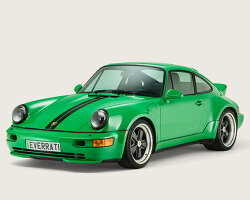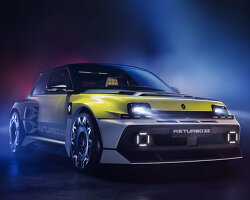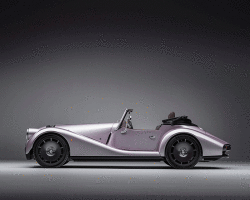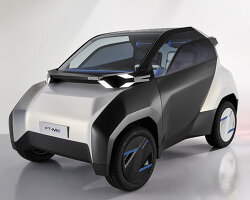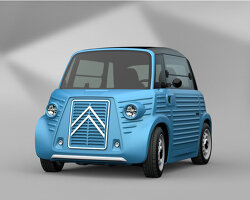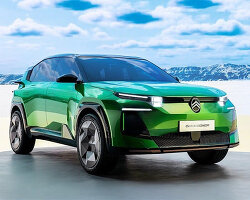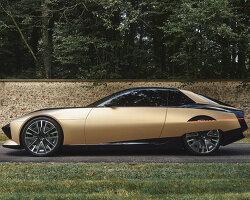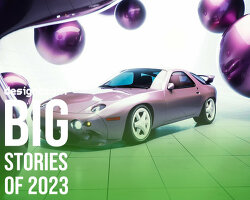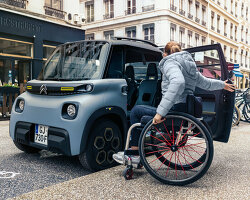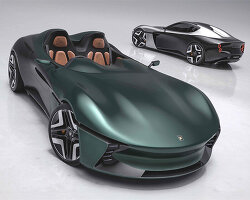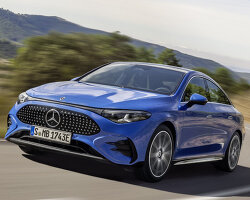meet the citroën oli, a new zero-emission mobility concept
For Citroën, predicting the future of affordable personal mobility is an obsession, and the success of its AMI model has provided the impetus to take ‘unconventional’ to a new level in the conceptual and all-electric OLI. Designed as a striking and innovative ‘laboratory on wheels’, this new vehicle seeks to move the needle for family mobility and say ‘enough’ by bucking industry trends for heavier, more complex, and expensive electric cars. Rather than being a 2500 kg ‘palace on wheels’ filled with screens and gadgets, OLI proves that with enough of the things customers need and want, supported by responsible materials and a sustainable production process, the societal need can be met for inexpensive yet desirable zero-emission mobility enabling multiple lifestyles.
While it appears substantial, OLI is neither heavy nor cumbersome – its target vehicle weight of around 1000kg, making it significantly lighter than most compact SUVs. As a result, its all-electric powertrain needs only a 40kWh battery to deliver a target range of up to 400km. Moreover, by limiting the top speed to 110km/h to maximize efficiency, excellent consumption of 10kWh/100km is realistic, and recharging from 20% to 80% takes just 23 minutes.
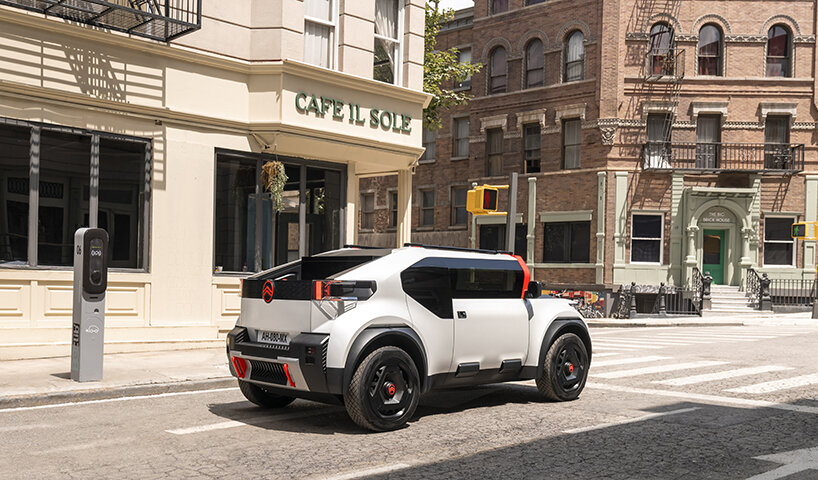
all images courtesy of Citroën
striking, all-electric, and versatile
Striking and making a statement, the Citroën OLI boasts an unconventional stance and silhouette that exudes personality, productivity, and positivity in a footprint similar to a compact SUV at 4.20m long, 1.65m high, and 1.90m wide. ‘[It] can be whatever it needs to be – family limo, urban explorer, adventure vehicle, workmate, even an extension to the family home thanks to its ability to power everyday appliances, help in the event of a power cut or provide a platform for cleaning windows,’ explains the company.
The aesthetic approach has been deliberately exaggerated to reinforce functionality and versatility, distinguishing itself with its playful use of color highlights, bright trim materials, and vibrant patterns that advocate opportunities for personalization. ‘We’re not afraid to show you how the vehicle is put together, so you can see frames, screws, and hinges, for example. Embracing purity allows us to design differently and challenge everything. It’s like taking an analog approach to many things that have become digital today,’ adds Pierre Leclercq, Citroën Head of Design.
A prime example is how OLI can enable an electric lifestyle beyond its capacity as a form of zero-emission mobility. By supporting innovative ‘Vehicle to Grid’ (V2G) capability, the vehicle can store excess energy from home solar panels, sell this back to energy suppliers, and help manage power issues when there is peak demand or an outage in the grid. Furthermore, thanks to its ‘Vehicle to Load’ (V2L) capability, it can perform as a home away from home. Considering its 40kWh battery and a power socket output of 3.6kW (the equivalent of a 230v 16amp domestic socket), it can theoretically provide power to a 3000 w electric device for around 12 hours.
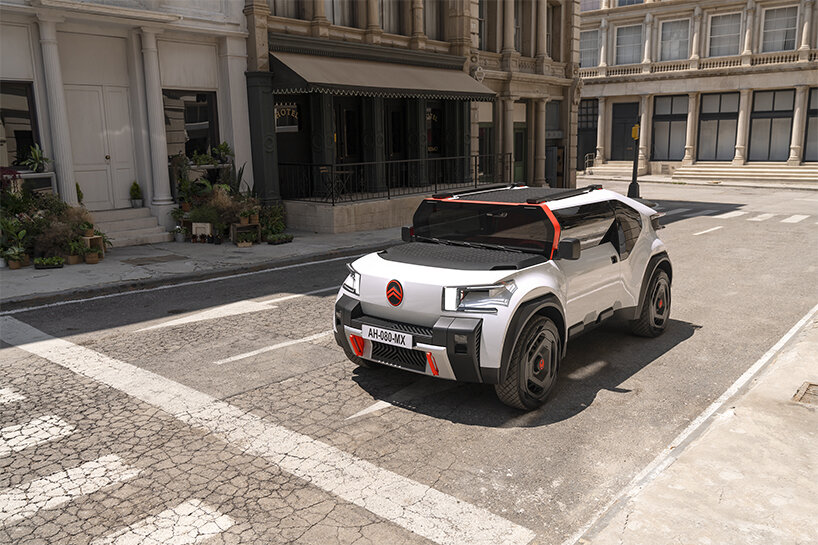
Another striking feature is the versatile platform roof that tops the vehicle. Citroën co-created that feature with BASF, using recycled, corrugated cardboard to form a honeycomb structure sandwiched between fiberglass reinforcing panels. Each panel is coated in Elastoflex® Polyurethane resin covered in a protective layer of tough, textured Elastocoat®, often used on parking decks or loading ramps, and painted with BASF R-M Agilis® paint. As a result, the panels are rigid, light, and strong – so strong that an adult can stand on them – and weight is reduced by 50 percent compared to an equivalent steel roof construction.
Their versatility and durability open up a world of possibilities for owners to enjoy work and recreation — from using the roof as a ladder to a platform to mount a tent. Load carrying versatility is not compromised either, as rails on each side of the roof panel let owners attach accessories like bicycle racks and roofboxes for family vacations, while below the bonnet panel are neatly detailed storage areas in, including compartments for charging cables plus personal and emergency items.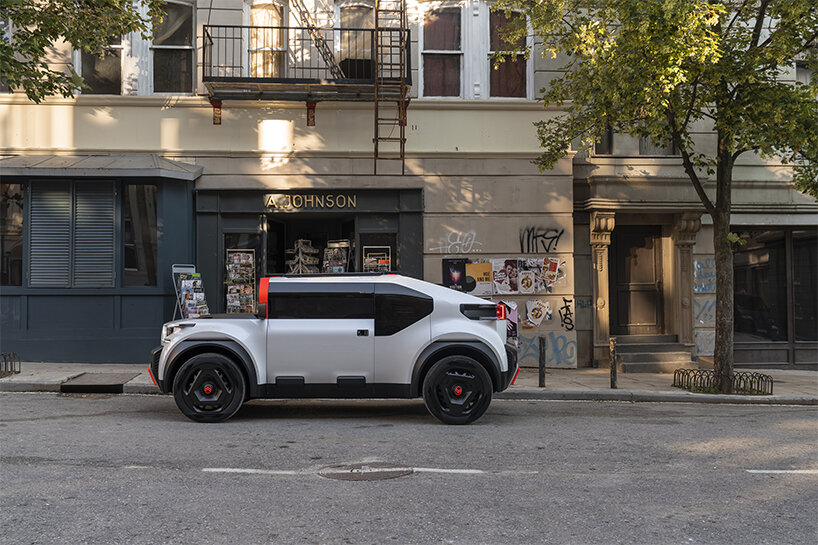
HORIZONTAL MEETS VERTICAL in the citroën oli
Making a conscious decision to create flat surfaces because of the resource and materials targets allowed the team to experiment with the contrast of vertical and horizontal design elements, for example, in the glass and lighting details. The windscreen is vertical because it’s the shortest distance between the top and bottom and uses the smallest amount of glass. As well as reducing weight and complexity, the smaller screen is less expensive to produce or replace and lessens occupants’ exposure to the effects of the sun. It is also estimated to help reduce the modest air conditioning system’s power demand on OLI’s batteries by up to 17%.
To aid efficiency, the car features an experimental ‘Aero Duct’ system between the front section of the bonnet and the flat top panel, which blows air towards the screen, creating a curtain effect to smooth airflow over the roof. The eye-catching windscreen frame is finished with a bright ‘infra-red’ wrap – a new signature color Citroën will use in conjunction with a new brand identity. The contrast between horizontal and vertical is evident in the rationally thought-through side panels and glass. The front doors follow the example set by AMI and are identical on each side, though mounted differently. They are lighter yet still strong and much easier to make and assemble.

versatile platform
Reducing complexity and simplifying construction saves 20% in weight per door compared to a typical family hatchback. Half the number of components is required, and around 7kg per door is saved by removing the loudspeaker, soundproofing material, and electrical wiring. The external door panel is simpler to stamp and is designed to maximize interior storage. Gentle curvatures flow up the sides of the vehicle and into the top of the side glass as it tumbles home to the roof. Large, horizontal windows are tilted slightly towards the ground to help to reduce the effects of the sun, and manual, easy-to-operate “flip up” pantograph opening sections, similar to those used on Ami, provide fresh air ventilation. The narrower rear doors are hinged at the vehicle’s rear and use vertical glass to give rear passengers more light and visibility. The change in form between the front and back doors also allowed for adding a passive air intake providing ventilation for rear-seat passengers.
Access to the spacious cabin is wide, uncluttered, and unhindered, with both side doors open – ideal for when the driver needs to get straggling family members loaded efficiently. Again, front and rear lighting modules are uncomplicated but highly distinctive and play with the contrast between two horizontal lines and one vertical section. This approach will be evolved further as a unique Citroën lighting signature in future production.
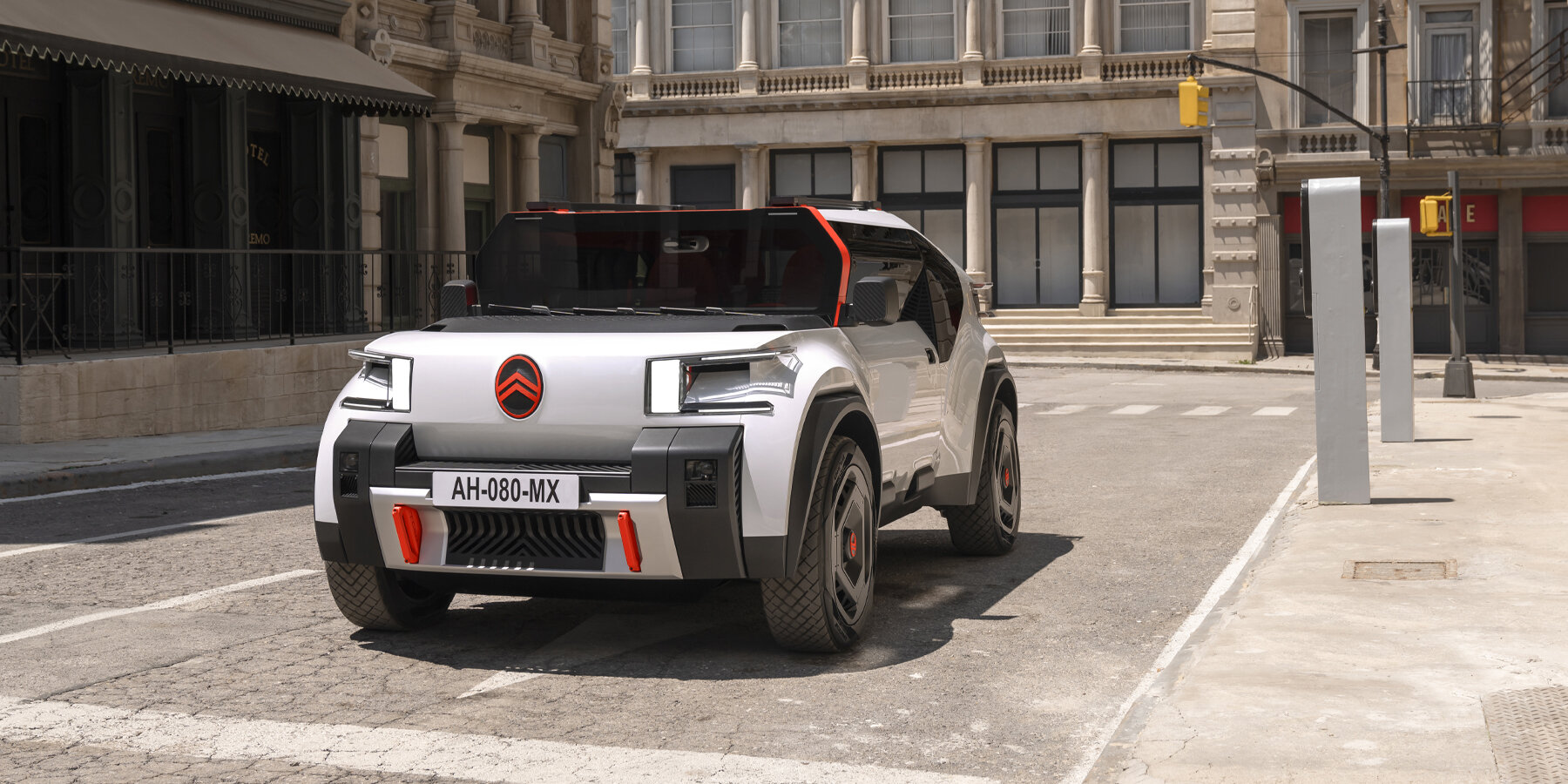
While the Citroën OLI’s form contrasts horizontal with vertical and rounded with flat to suggest functionality, technical competence, and clever industrial design, the new ‘floating’ logo does the same. Prominent chevrons are positioned boldly and horizontally across the badge to signal engineering and technical efficiency. They are contrasted with the warm softness of a vertical oval surrounding them to suggest the brand’s unwavering commitment to the wellbeing of its customers. The new badge purposefully evokes the company’s original 1919 logo and subtly re-imagines it for future Citroëns. The identity is set to appear progressively on future product reveals and throughout the Citroën corporate and dealership networks.
Instead of the usual trunk or hatchback, OLI features an unexpected, inspired exercise in helpful product design. Whether visiting a furniture store to bring home flat-packed furniture or loading paddleboards and pop-up roof tent for a weekend at the coast, the four-wheeler can accommodate all in the spacious pick-up bed and trunk, thanks to its quickly and easily demonstrated party trick.
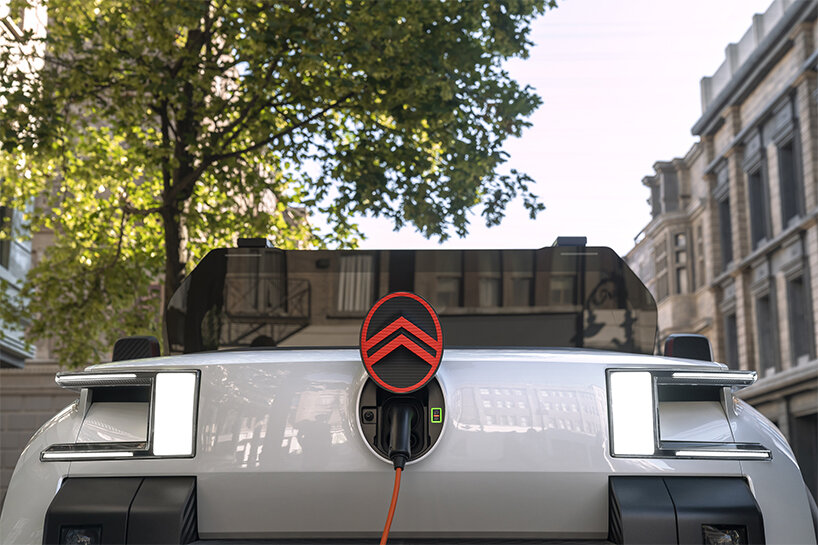
new logo design
Meanwhile, the ingenious and efficient 20-inch wheel and tire combination fitted to the model marries a new hybrid wheel prototype design with a conceptual, sustainable, and intelligent tire co-created with Goodyear. Since full aluminum wheels are expensive and energy-intensive to produce and full steel wheels are heavy, it was decided to blend both. The resulting hybrid wheels are 15% lighter, contributing to an overall vehicle weight reduction of 6kg.
Additionally, Citroën OLI is both protective and protected, thanks to tough exterior plastic sections. To execute Citroën’s signature design element, partner Plastic Omnium helped create a ‘mono material’ approach to facilitate easy recycling with strong but light side protection and 100% recyclable bumpers containing 50% recycled materials. Each wheel arch is capped with an identical, strong recycled plastic protector with a horizontal top, echoing the contrast theme used for the windows and lighting modules. Central bumper sections, like those used in Ami, are identical front and rear. Below, triangular infra-red ‘handles’ are, in fact, strong hooks that would help drivers tow another vehicle out of the mud or pull a large stone out of the way. Even the car’s tough white BASF R-M Agilis® waterborne paint is eco-effective with the lowest level of volatile organic compounds (below 250g/l).
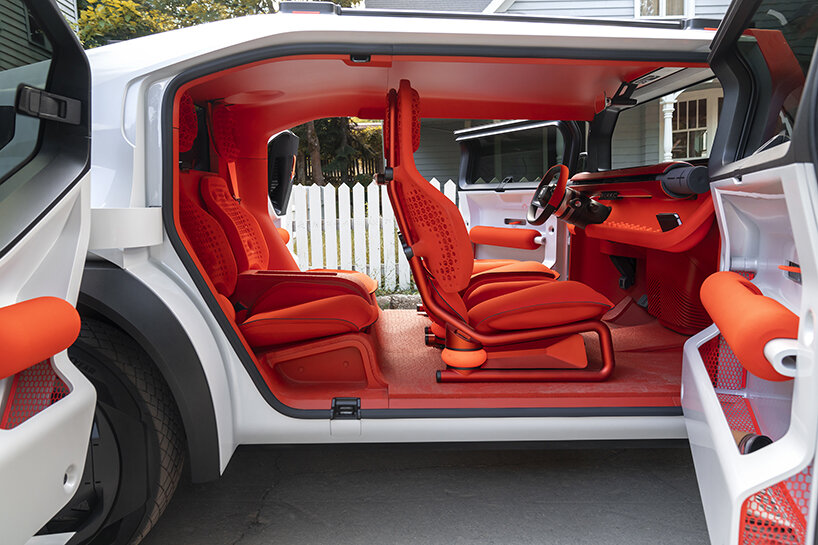
bright-orange interior
INNER SPACE: THE CHALLENGING FRONTIER
Instead of an entire dashboard with multiple screens and hidden computers, OLI features a single symmetrical beam running across the vehicle’s width. From there hangs the steering column and wheel on one side, a smartphone dock, and five identified toggle switches for the air conditioning system in the center. The beam houses an electrified rail into which drivers can plus accessories via USB sockets that slide along it. Once plugged in, phone information and apps merge with essential vehicle data like speed and charge level. This is made visible via a ‘Smartband’ system, which projects information across the width of the lower windscreen surround. Two direct air vents, one each in front of the driver and passenger, allow smaller air conditioning units to further aid efficiency and reduce weight. Sitting behind and below the beam is the ‘sofa’ made of BASF Elastollan® – a bright orange, recyclable 3D-printed Thermoplastic PolyUrethane (TPU) storage shelf featuring flexible ‘mushrooms’ that keep objects in place.
Bright orange front seats incorporate strong tubular frames mounted with a comfortable base cushion covered in 100% recycled and recyclable polyester textile. Innovative 3D-printed mesh backrests feature an integrated headrest and echo modern office furniture. They are slim but highly supportive, comfortable, and rigid, exactly where they need to be. Co-created with BASF, they are made from lightweight, 100% recyclable Thermoplastic PolyUrethane (TPU). The material has been covered with an inviting orange coating. At the same time, the mesh backrests amplify the feeling of space and light inside the vehicle – key contributors to comfort and well-being.
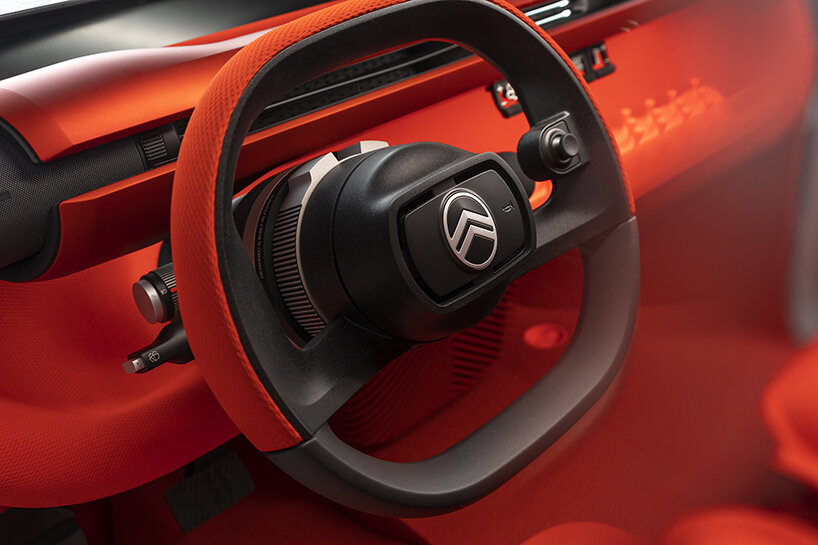
In keeping with Citroën’s commitment to comfort, front seats attach to the floor through flexible, recyclable TPU isolation rings that absorb road impact and vibration and echo the brand’s ‘Progressive Hydraulic Cushions.’ Equally comfortable individual rear seats are made from similar materials, and the backrests fold flat to extend the rear load bay floor. Roof-mounted circular TPU headrests float above each backrest and fold into the roof when required. On each side of the vehicle below the rear seats, and accessible when rear doors are open, is a discreet first aid kit storage compartment. A storage console sits neatly in the space between the individual rear seats. Like the ‘sofa,’ this orange, recyclable, and soft 3D-printed TPU component features flexible ‘mushrooms’ to hold items in place.
Notably, all interior BASF TPU parts can be recycled together, which is a further step towards sustainable mono-materiality as an element of the Life Cycle Assessment. Instead of heavy inner door panels containing switches, armrests, speakers, and window motors, Citroën OLI’s simplified panels maximize storage while providing comfort and easy opening and closing. A large, open storage net is inserted between the inner and outer panels of the front doors, and an orange armrest pad covered in 100% recycled and recyclable polyester textile is affixed directly to a horizontal line on the board. Finally, opening the front doors is easy, thanks to a recyclable pull toggle presented through the panel and directly connected to the mechanism. Screws and fixings used in the doors and seats are interchangeable, further reducing complexity.
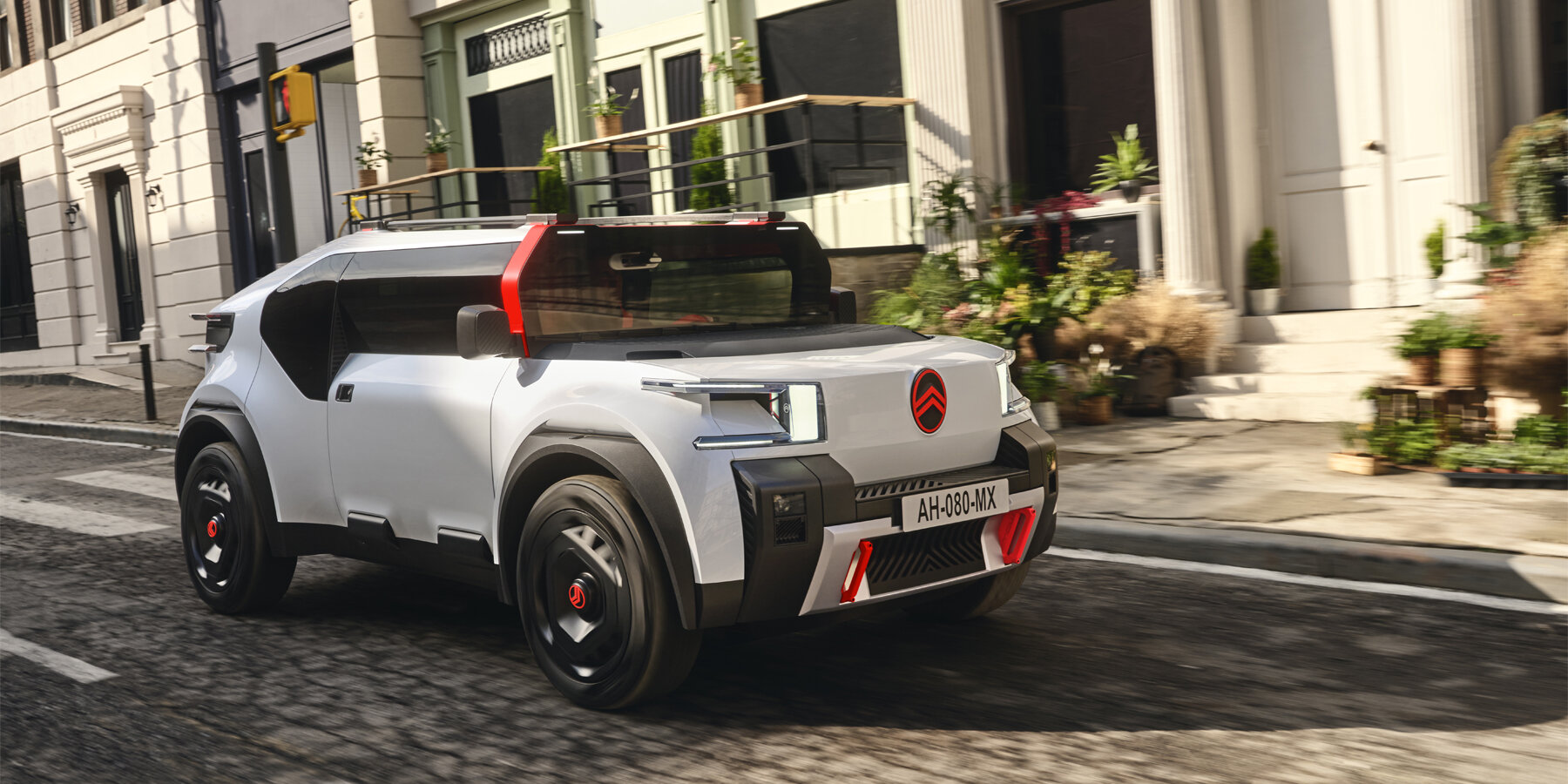

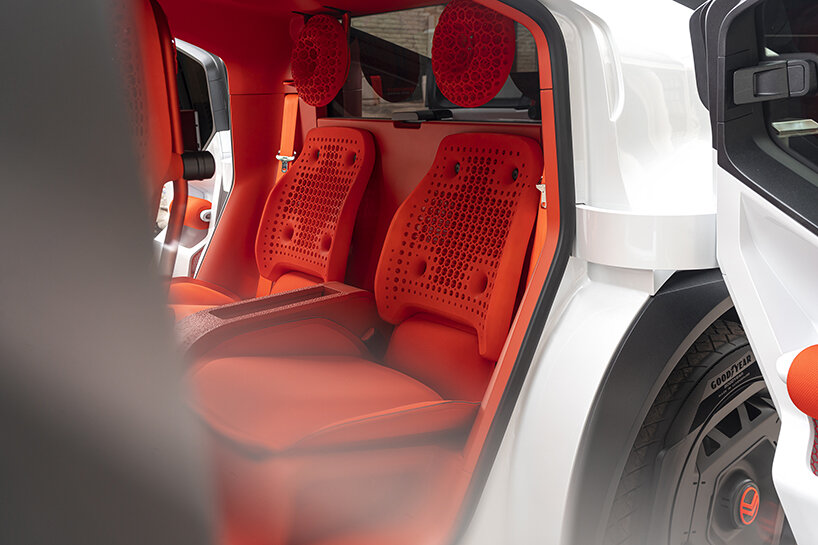
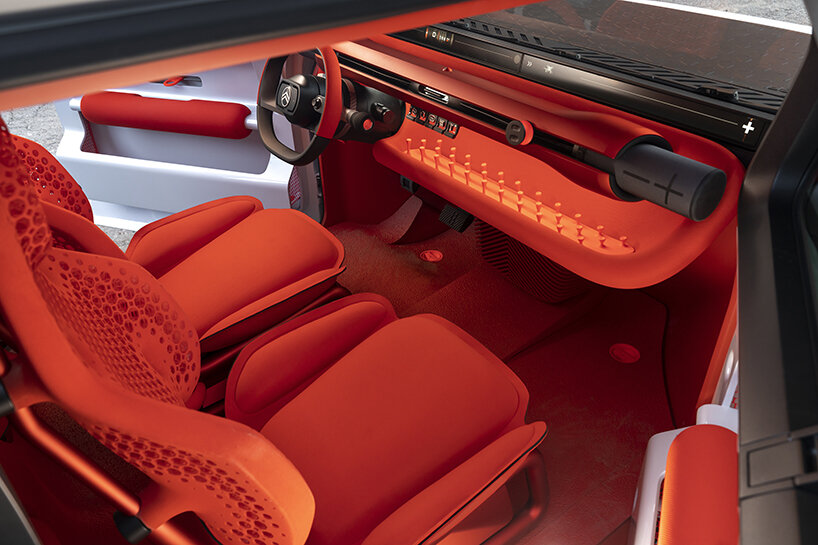
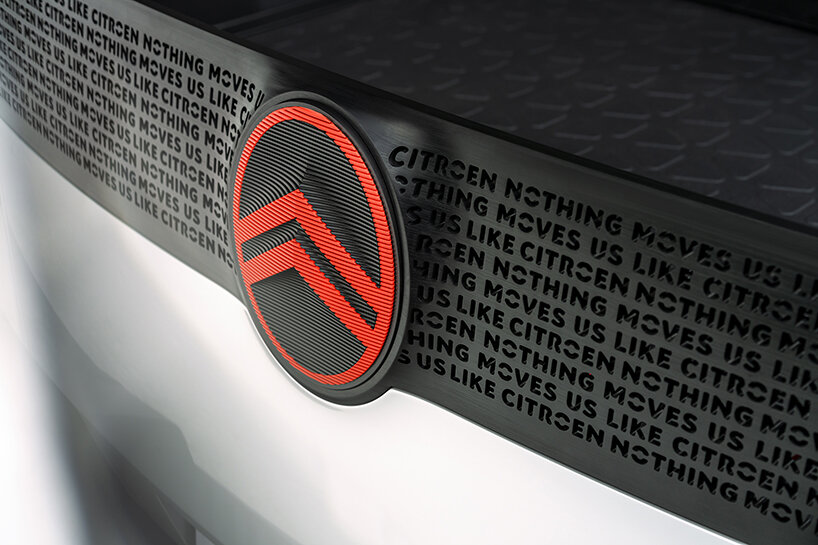
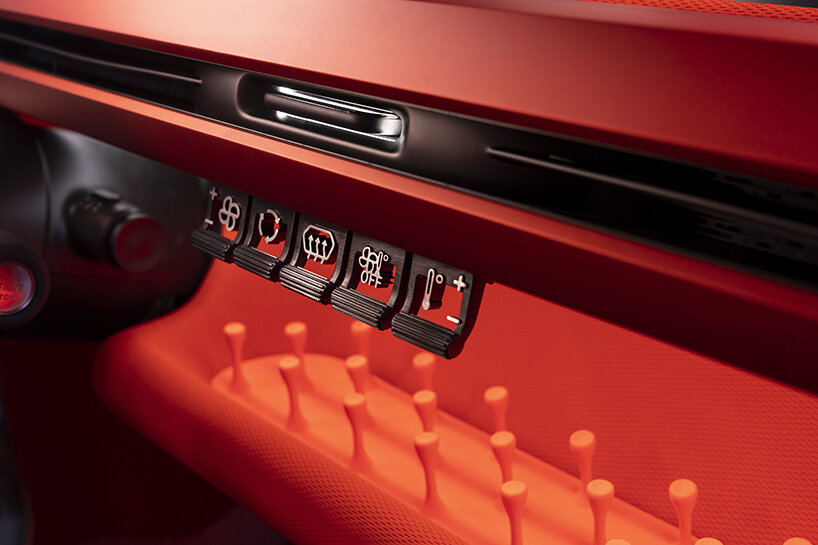
project info:
name: Citroën OLI
type: Electric Vehicle (EV)
power: 40kWh battery
dimensions: 4.20m L x 1.65m H x 1.90m W
collaborators: BASF, Plastic Omnium, Goodyear
